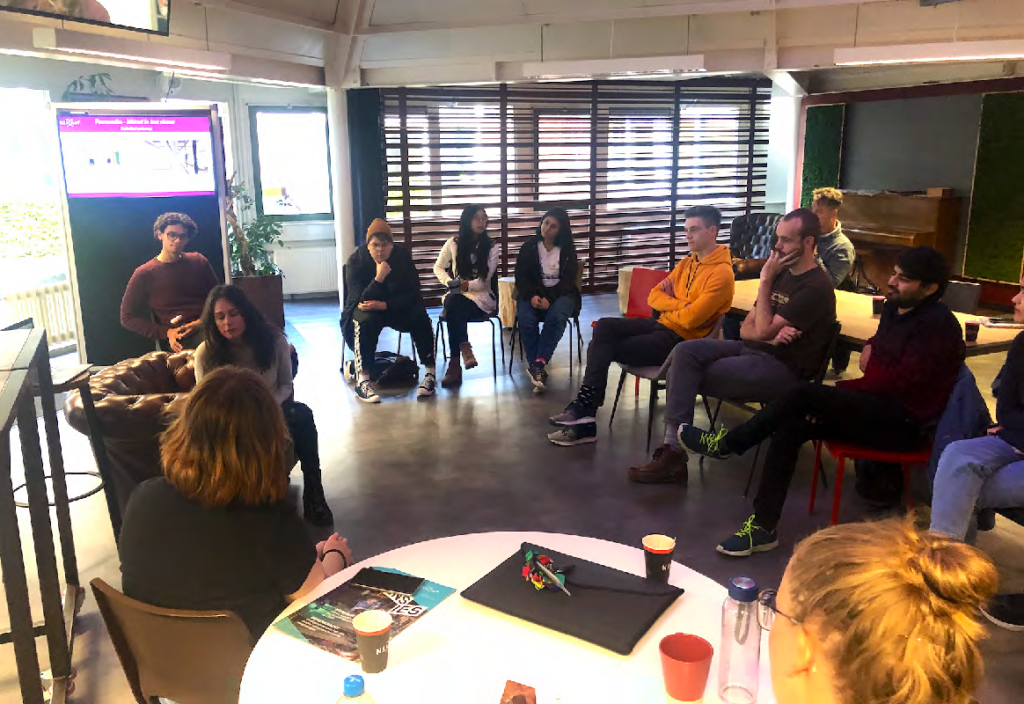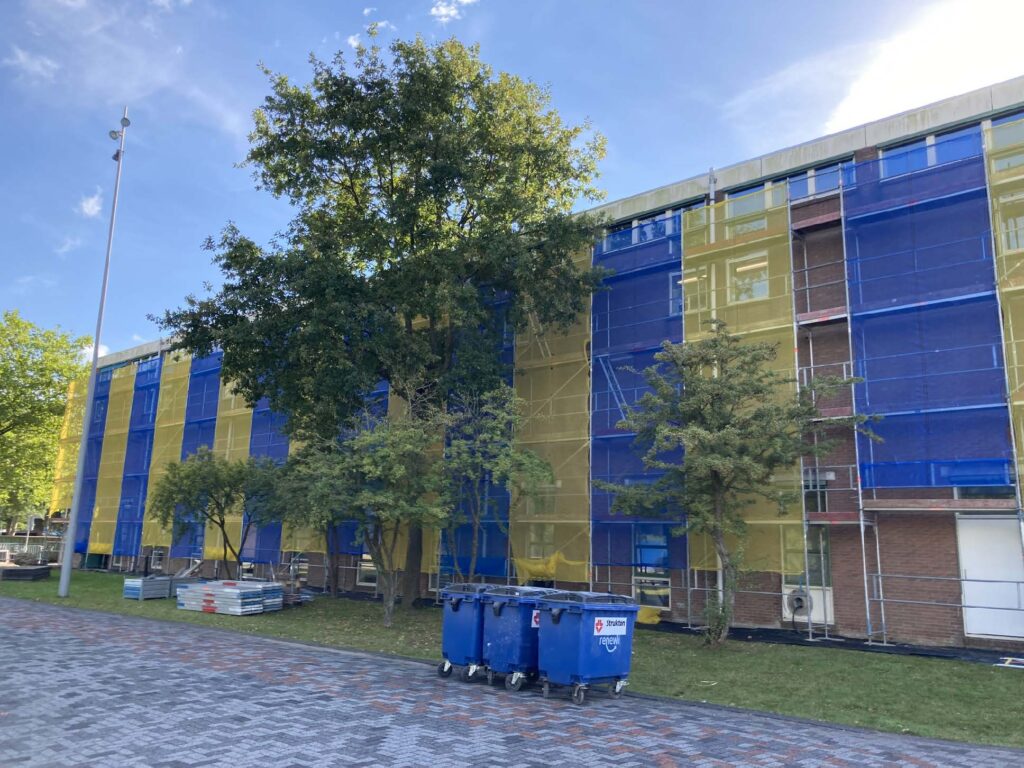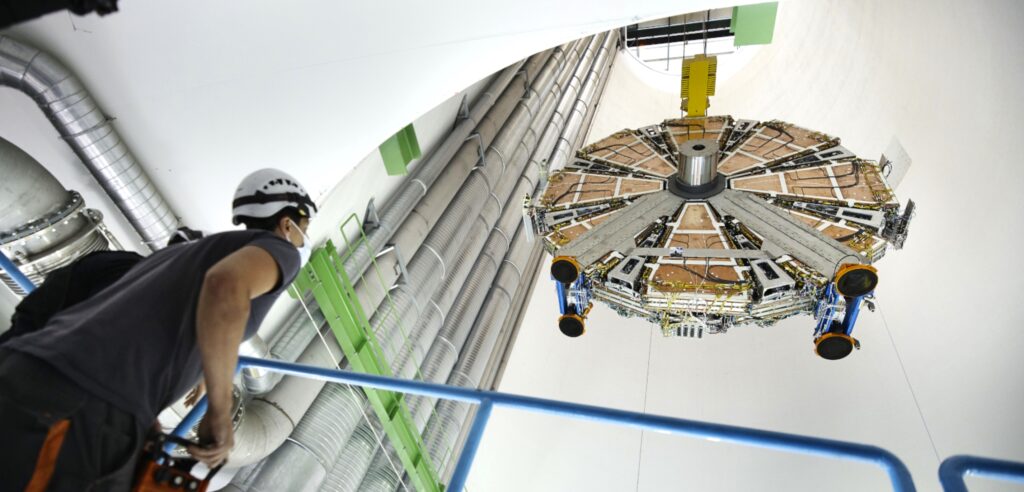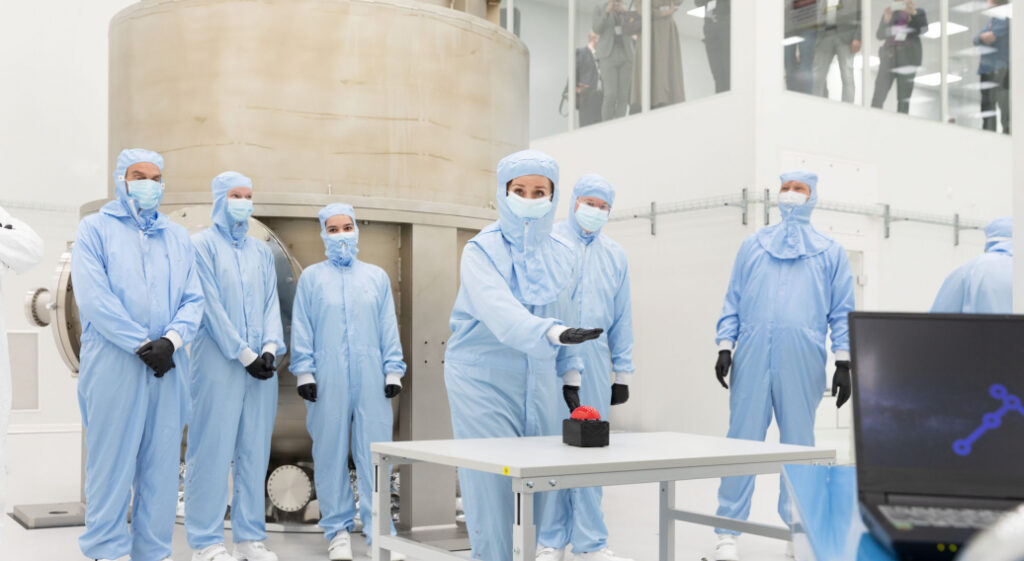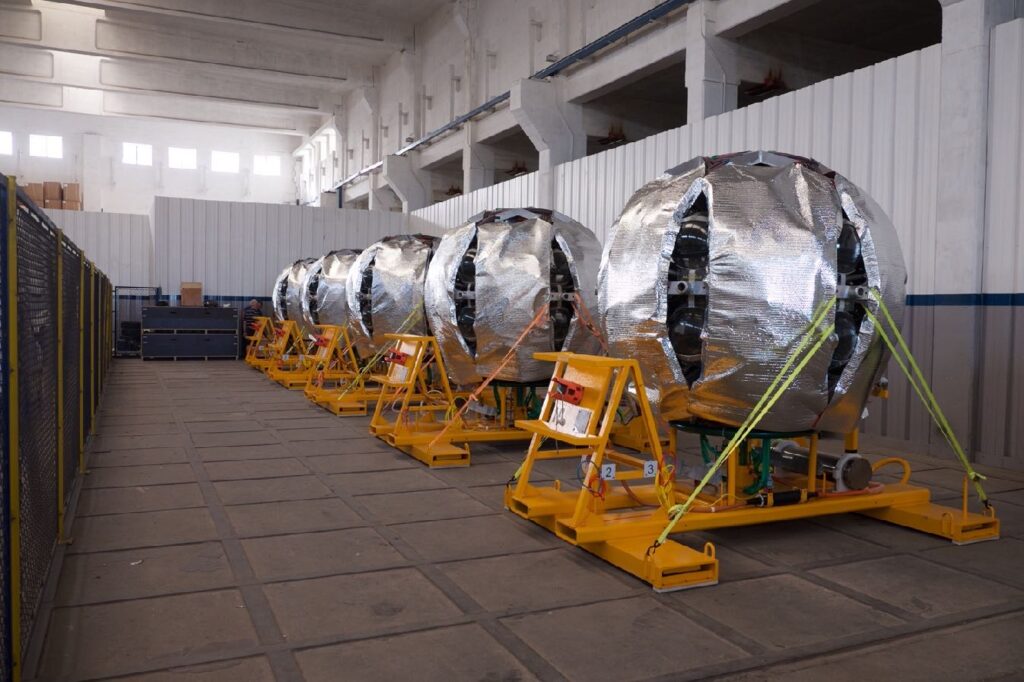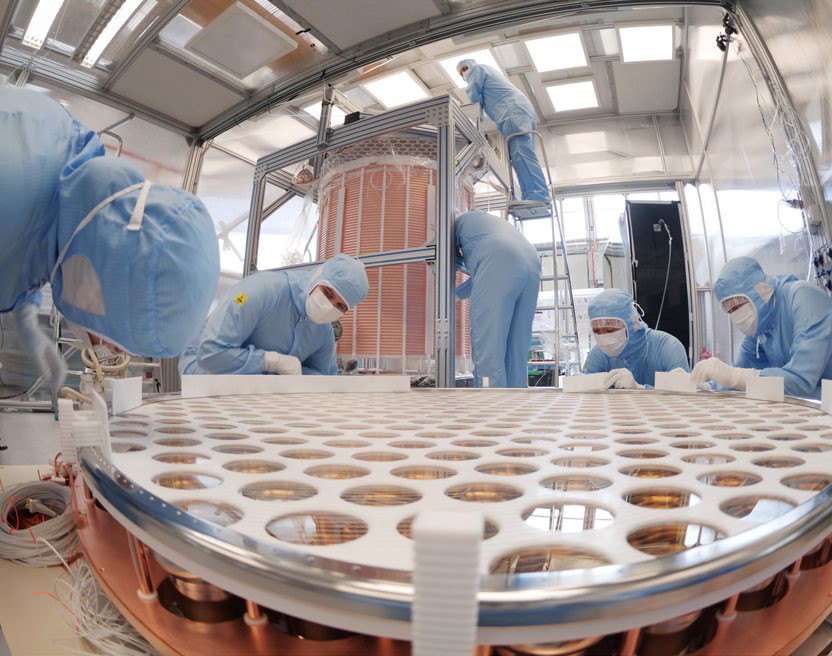2021 at a glance
Covid-19
Hybrid working has become the new normal, but with ever-changing rules through the course of the year. So, the limits on the number of people allowed at Nikhef, restrictions on travelling abroad and the 1.5 metre distance rule came and went. Emphasis is on providing sufficient ventilation in offices and meeting rooms. During the summer, (informal) meetings became possible and lectures at Nikhef resumed. In December the measures became more stringent again.
Renovation
The hall of the Mechanical Workshop is almost finished. The façade of the building is renovated as well. Moreover, the N-wing of the building is now taken care of. Groups of technicians and physicists are relocated elsewhere in the building or partly reallocated in a temporary building on the site.
CERN-Developments
The test with beams in the improved LHC was successful. First low-energy LHC pilot beams were seen in the detectors on October 29, later that week low-energy beams collided. Full-energy beams for the experiments are foreseen for spring 2022.
For ATLAS, the New Small Wheels were installed, after a decade of design and construction. A new beampipe with a new Si-detector set-up and a scintillating-fiber particle-tracking detector (SciFi) join LHCb. A test of the new trigger set-up with all events processed by CPU/GPU systems was successful. ALICE is ready for Run 3 with a new 13 gigapixel tracker and several upgraded detectors. All above-mentioned upgrades have major Nikhef contributions.
ATLAS reported the first simultaneous production of three W bosons, intriguing results from LHCb strengthen hints of a violation of the lepton flavour universality and ALICE showed that charm quarks form hadrons in proton-proton collisions in unexpected ways.
Gravitational Waves
The Gravitational-Wave Transient Catalogue now contains 90 signals, 35 of which were not published before and which were observed in the second half of the third joint observing run of LIGO-Virgo, that ended in March 2020. All signals come from merging black holes and neutron stars. The new catalogue contains surprises, such as an unusual neutron-star–black-hole merger, a massive black hole merger, and binary black holes revealing information about their spins. The detectors are currently being upgraded for the fourth joint observing run, which is expected to begin late in 2022.
For the Einstein Telescope proposal, geology studies were done in Limburg. In June the European Strategy Forum on Research Infrastructures (ESFRI) decided to include the Einstein Telescope (ET) in the 2021 upgrade of its roadmap. A National Growth Fund proposal for realizing this enterprise in the Euregio Meuse-Rhine has been submitted, with support letters from institutions and industries. Emphasis is now on activities to connect even more closely with industry. The ETpathfinder Laboratory in Maastricht, with a completed clean room and one tower installed, was officially declared open by Ingrid van Engelshoven – the outgoing Minister of Education, Culture and Science – on November 8.
Other Experiments
KM3NeT has two locations: the ORCA-part in the sea near France (dedicated to neutrino-oscillation studies), and an even bigger Italian part near Sicily: the ARCA-part (dedicated to the search for neutrinos from outer space). ORCA has now six working lines, ARCA eight working lines. Construction of detector lines is ongoing. When finalised, ORCA will have 115 lines and ARCA 230. A first paper has been published in 2021 by KM3NeT-ORCA on neutrino-oscillations.
The XENON collaboration has installed XENONnT in the COVID-era: a tank filled with 8.5 ton xenon, complete with new electronics for the search for dark matter, but also for the search for neutrino-less double-beta decays. XENONnT started its first measuring run in April.
The composition of ultra-high energy cosmic rays and their origin is determined by the Pierre Auger Collaboration. The Observatory has upgraded its present stations with surface detectors and radio detectors. The upgrade is now fully installed, the full array will be deployed from April-December 2022. After technical updates the operation time of the full observatory will increase substantially by allowing running under moon light.
The NL-eEDM team that aims to measure the electron’s electric dipole moment at Groningen, makes good progress with the difficult process of slowing down molecules in the experimental setup. SrF molecules enter a 4.5-metre-long Stark decelerator in which alternating electric fields act to slow and then stop them for up to 50 ms. The heavier BaF molecules will be used in the future and the first measurements are foreseen for 2022.
